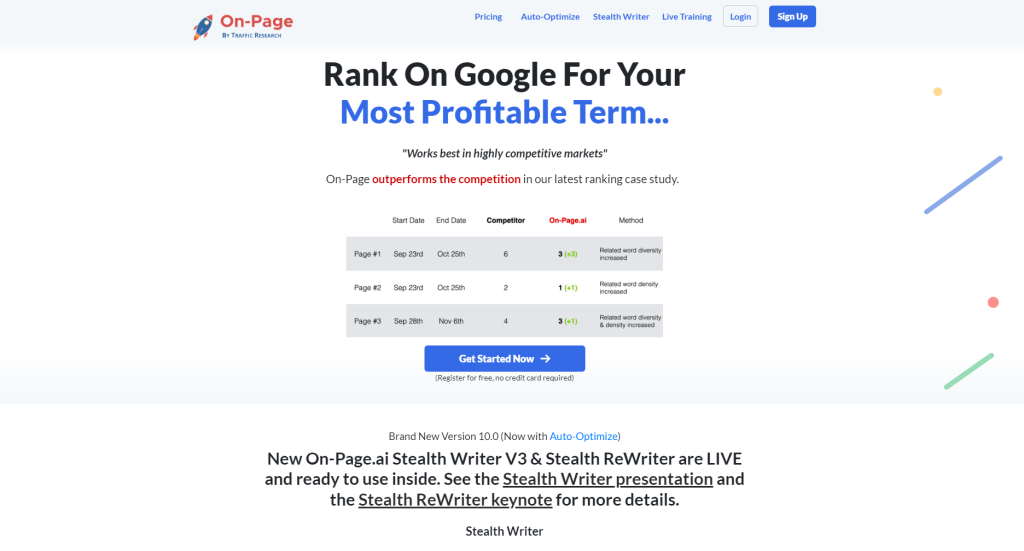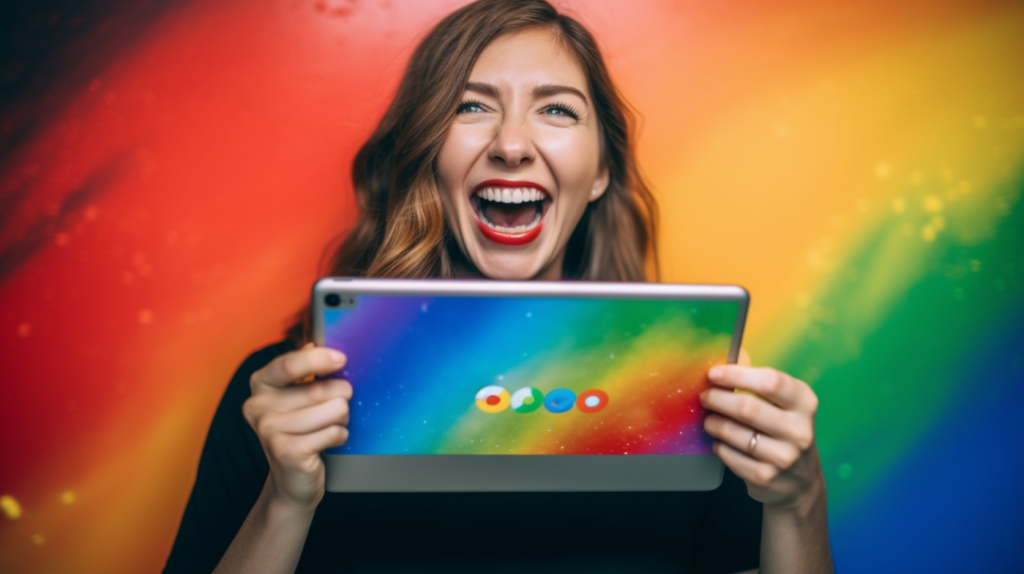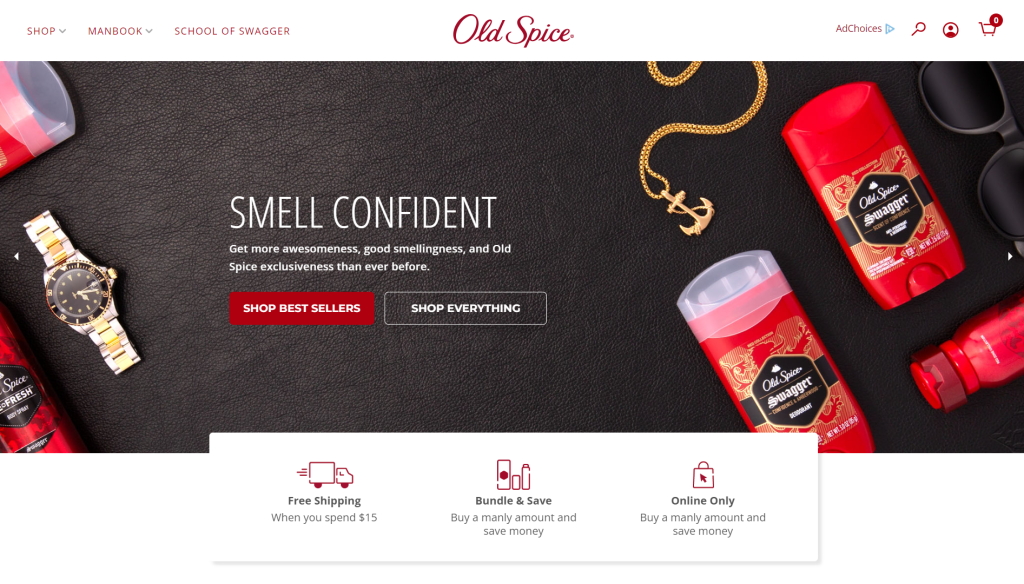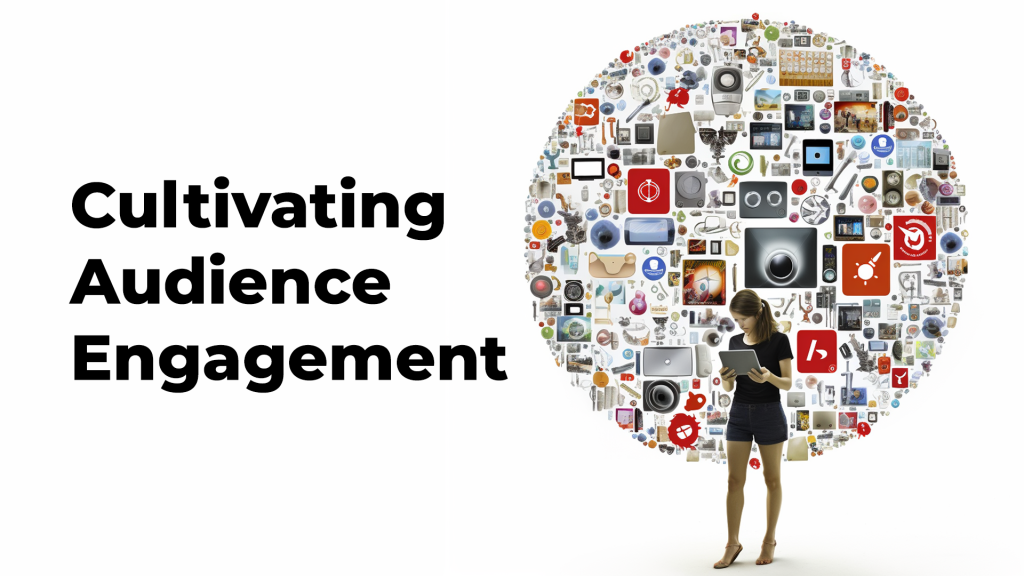Unlocking the Power of Social Signals in On-Page SEO
In the digital jungle, social signals are the lifeblood of a thriving website. But how do you ensure your on-page SEO makes the cut in this ever-evolving ecosystem? Buckle up, and let’s dive into how the almighty power of social signals can elevate your website’s ranking to unimaginable heights with On-Page.ai, your knight in shining armor!

Social signals such as likes, comments, and shares impact a website’s search engine ranking because they demonstrate social media users’ perceived value of content. While Google’s stance on the direct impact of social signals on ranking has evolved over time, increasing your social media presence can lead to more engagement and help drive traffic to your website, which can ultimately improve your SEO performance. It’s important to focus on producing high-quality content that is valuable, informative or entertaining for your audience to encourage positive interaction and engagement.
Unraveling Social Signals in On-Page SEO
Social signals refer to a webpage’s collective shares, likes, and overall social media visibility as perceived by search engines. They are an indirect measure of a website’s authority and influence on the web. In recent years, social signals have become more critical than ever in enhancing a website’s SEO performance.
As search engine algorithms continue to evolve, they have become more sophisticated in determining which websites are considered authoritative sources of information. One way that search engines can tell if a site is authoritative is through social signals. When people share links from a website on social media platforms like Facebook and Twitter, it sends strong signals to search engines that the website is offering valuable content that people find insightful and engaging.

Google has stated that social signals are not a direct ranking factor. However, there is evidence to suggest that the number of likes, shares, and comments a page receives has an impact on its ranking potential. According to Moz’s 2015 Search Ranking Factors study, there was a clear correlation between higher search rankings and the number of backlinks from highly shared content on Facebook.
Some critics argue that social signals may be overrated as an indicator of website quality. They point out that social media users may be quick to share content without fully understanding its value or accuracy. Others also note that shares on social media platforms do not necessarily translate into meaningful engagement or conversions for businesses.
While it’s true that social signals should not be the sole focus of any SEO strategy, it’s important to recognize their effect on your website’s overall online presence. Next, we will explore what we mean by “social signal” and how they function in relation to other SEO factors.
Defining Social Signals
Social signals are interactions between social media profiles or content, including comments,likes, dislikes, shares, and bookmarks. These social signals help search engines understand which content is most popular and relevant to users. Since social signals represent real user interaction with a website or content, they are seen as a more trustworthy indicator of content quality than other off-page factors such as backlinks.
For example, if a Facebook post from your website receives many likes and shares, this sends positive signals to search engines and raises the profile of that particular piece of content. Similarly, if you receive a lot of retweets for a link on Twitter, it will boost the authority and ranking potential of the linked page.
You can think of social signals as a form of “digital word-of-mouth” marketing. When people share links to your website or content on their social media accounts, they are effectively recommending your content to their followers. This kind of organic sharing can lead to an exponential increase in visibility for your brand or business.
Social Signals and SEO Performance

Social signals refer to the interaction of users with a website’s content on social media platforms. The more shares, likes, comments, retweets, and mentions your content receives on social media, the better its performance on search engine result pages (SERPs). As an SEO expert using On-Page.ai, optimizing for social signals implies managing and crafting shareable content that resonates with your target audience.

For instance, imagine you publish a blog post about “best digital marketing tools for small businesses,” and it goes viral on Twitter. In this example, you will receive more organic traffic from Google due to higher social engagement with your content. In other words, when people share or engage with your content, search engines like Google reward your website with increased visibility and rankings. Likewise, low social engagement could lead to lower search engine rankings.
In 2010, Matt Cutts stated in a YouTube video that social signals do not have a direct impact on Google’s ranking algorithm. Nonetheless, he mentioned that Google crawls external links posted on social media platforms as it does with any other external website link. Fast forward to today; things have evolved. A recent study shows a positive connection between social media signals and pages ranked on page one of the search results. This means sites with higher social media engagement tend to rank better in SERPs.
Think of social signals as a vote of confidence from users who are sharing your content with their friends or network—a way of telling search engines that your site is relevant and informative to the users’ intent.
With that said, let’s explore how social signals influence search rankings.
- A study by Hootsuite found that there is a positive correlation between the number of social media engagements and search engine rankings, with content shared on social platforms receiving an average increase of 22% in organic search traffic.
- According to a survey conducted by Search Engine Journal, 58% of marketers believe that social signals have a direct or indirect effect on Google search rankings, emphasizing the importance of a strong social media presence for enhancing On-Page SEO.
- Data from HubSpot reveals that integrating social sharing buttons on a website can increase PageRank by up to 7%, showcasing the role of making content easily sharable when it comes to improving On-Page SEO performance.
Influencing Search Rankings
Search engines have always used backlinks as a critical ranking factor for websites. However, the emphasis has shifted towards trustworthiness and relevance in recent years. Social signals help search engines assess your website’s reputation and authority, which ultimately impacts your search engine rankings.
A page with 10,000 Twitter followers will likely rank higher than a page with only 100 followers. Similarly, a page with over 1,000 Facebook likes indicates that it is not only popular but also relevant to the users’ intent.
Google has confirmed the use of social media profiles to analyze the authority of a content creator and determine its value. Additionally, Google indexes social media profiles just like any other website, which can develop trust between users and brands resulting in more clicks and backlinks.
One could argue that social signals are not an organic way of ranking websites since they can be manipulated or bought. However, On-Page.ai‘s strict policy on organic SEO practices and our ability to track intentional cheating makes such practice risky while offering minimal return on investment.
Now that we have explored how social signals impact search rankings let’s dive into strategies to amplify their effects.
Strategies to Amplify Social Signal Effects

Social signals are the interactions within social media profiles that signal a webpage’s collective shares, likes, and overall visibility. While social signals may not directly affect a site’s ranking in search engine result pages, increasing social media engagement through strategies like crafting shareable content can have a positive impact on SEO performance. Below are several strategies that are designed to amplify social signal effects:
- First and foremost, establish a cohesive social media marketing strategy that focuses on promoting high-value campaigns, sales, and products. Plan out your posts ahead of time and map out where each post will be disseminated.
- Monitoring your social media marketing is key in understanding what drives engagement on social media channels and helps you identify which platforms perform best with your audience. Gather data about what types of posts create higher engagement.
- Some argue that constantly monitoring social media engagement may lead to perceived manipulation or insincerity by your audience. However, most users today expect businesses to have an accessible presence in the digital sphere.
- Encourage audience engagement by responding rapidly to comments, messages, and questions across all platforms. Building a connection between brand and follower helps create loyal customers who may share your content more frequently.
- Social media contesting creates a fun atmosphere for followers, as well as increase both website traffic and conversions. Types of contests run the gamut from polls on favorite products or services to photo uploads featuring user-generated content.
- Treating contests like “Secret Santa” gift exchanges with guidelines (e.g., no duplicate entries) can help encourage creativity amongst participants while maintaining an approved framework.
Now that we have discussed strategies to amplify social signal effects let us delve into how to craft shareable content.
Crafting Shareable Content

Crafting shareable content to generate higher engagement rates on social media platforms can positively impact a website’s SEO performance. Remember, quality content that performs well on social media often ranks well in search results as well.
Use Keyword Related
Use keywords related to your industry, niche, or brand to create unique and engaging content with the aim of amplifying audience involvement. Spice up your copy by including multimedia posts containing curated or original images, videos, or any other digital assets relevant to the message you want to convey.
Create shareable posts
Creating shareable posts is like whipping up a meal with the right ingredients. Every post should include just enough text to be informative yet snackable enough for audiences who may be scrolling through their feeds quickly.
Use Online Tools
Try using online tools such as headline analyzers and readability scorers to see how easily digestible your content is and if the topics you are writing about receive attention from specific demographics of users.
Tone Your Posts
Ensure that the tone of your posts remains consistent across different social media channels and matches your overall brand voice. This helps establish trust between the audience and the business and also strengthens brand identity.
Some argue that having a defined brand voice may not be appropriate in all situations where the customers may have different preferences or behaviors depending on their cultures; therefore, businesses need to be adept at tailoring their messages to many cultural norms.
To ensure that your posts appeal to diverse audiences, try testing out formats like humor or sarcasm to see which resonate best with different markets. Find what works for you and adopt it into your strategy.
Building Trust through Social Channels

Building trust is a crucial aspect of leveraging social media channels to improve your website’s search engine ranking. With the shift toward web communication to social media, establishing brand authority and credibility among your audience is more important than ever before.
One way to build this trust is by posting high-quality content consistently across all social media platforms. By doing so, you can demonstrate your expertise in your industry and also show that you are actively listening and engaging with your audience.
Moreover, creating a consistent tone of voice across all your social media channels can help establish a recognizable brand presence that consumers can identify and trust. You don’t always have to be formal or professional; sometimes even a touch of humor can be useful in building rapport with your audience.
For instance, take Old Spice, an American-based personal care brand that specializes in grooming products for men. They successfully increased their social signals by adopting an entertaining yet informative approach on their Twitter account. Their timely posts often included witty one-liners that would make their followers laugh while still sharing relevant information about their new products.

However, consistent posting and maintaining a unique tone will not be enough if you want to build trust within your audience effectively. Another crucial aspect that you need to take into account is engagement.
- Building trust through consistent high-quality content and a recognizable tone of voice on all social media channels is essential for improving your website’s search engine ranking. Additionally, engaging with your audience is crucial in establishing credibility and brand authority. Companies like Old Spice have demonstrated success by using humor and informative tweets to engage followers and build rapport. By taking these steps, you can effectively increase social signals, maintain a strong online presence, and build long-term relationships with your target audience.
Cultivating Audience Engagement

Engagement refers to the level of interaction between a brand’s content and its social media audience. It measures the number of shares, likes, comments, mentions across different channels such as Facebook, Instagram, LinkedIn, Twitter etc.
- Cultivating audience engagement on social networks helps improve SEO performance because it shows how active and interested people are in what you have to say or offer. The more engagement you receive from users on a particular platform, the more likely that platform’s algorithm will perceive your content as valuable and relevant.
- So how do you start cultivating engagement? One way is by creating content that users want to engage with. This could be anything from asking open-ended questions to encouraging followers to share their stories or experiences.
- You can also incentivize engagement by running contests or challenges that require user-generated content, which encourages a community-driven approach and strengthens audience participation.
A concrete example of successful audience engagement is Airbnb. They leveraged the power of Instagram and created a hashtag campaign called “#AirbnbCountdown,” which prompted guests to post photos of their stay for five days until check-out. Within two weeks, it generated over 10,000 photos from guests and received more than 2 million likes.
However, some businesses may worry about negative comments and reviews on social media channels. While it’s true that you cannot always control what people say about your brand online, remember that such feedback can often lead to opportunities for improvement and growth. Responding politely and promptly to any negative reviews will show other users that you take the time to listen and address concerns. Try On-Page.ai to craft exquisite and stunning writing for your SEO social signals.
Responses to Frequently Asked Questions with Detailed Explanations
Are there any risks associated with using social signals for On-Page SEO?
Yes, there are certain risks associated with using social signals for on-page SEO. While social signals do contribute to overall website ranking, reliance on social signals alone can be detrimental to the long-term success of your SEO strategy.
Firstly, social media platforms are known for their constant algorithm changes, which could result in a sudden drop in traffic or engagement. In fact, a recent study by Moz found that social shares had only a 5% correlation with higher search rankings, indicating that other factors such as quality content and backlinks may have a more significant impact.
Furthermore, over-reliance on social media for promotion can also lead to neglecting other important aspects of SEO such as keyword research and technical optimization. Neglecting these elements can result in poor site architecture and slow loading times, which could negatively impact both user experience and search engine rankings.
Therefore, it’s important to consider using social signals within a broader, well-rounded SEO strategy that includes multiple factors like content optimization, keyword research, and link building. By taking an integrated approach to on-page SEO, you’ll be able to reduce risk and maximize the potential benefits of social signals.
Which social media platforms are most effective for improving On-Page SEO?
When it comes to improving On-Page SEO through social signals, one cannot deny the efficacy of Facebook. With over 2.7 billion monthly active users, Facebook has a tremendous impact on search engine rankings. The platform allows businesses to engage with their followers by sharing informative and relevant content, which increases user engagement and traffic to the website. According to a study conducted by Hootsuite, Facebook was responsible for driving 25% of all website traffic in 2020, making it an essential platform for improving On-Page SEO.
LinkedIn is another effective platform when it comes to improving On-Page SEO. It helps businesses connect with industry leaders and professionals that might be interested in their services/products. LinkedIn is specifically useful for B2B companies as they can target decision-makers who can influence sales through their networks. According to a report by Social Media Today, LinkedIn generates three times more conversions than Twitter and Facebook.
Although Twitter may not be the most efficient platform for driving traffic to websites, it does play a vital role in increasing brand awareness and social signals. Tweets that include links or hashtags help businesses reach a broader audience and improve their online reputation. According to research, tweets that have relevant hashtags receive two times more engagement than those without.
In conclusion, while Facebook and LinkedIn are the leading platforms for improving On-Page SEO, businesses should not neglect other social media platforms like Twitter and Instagram as they do play an important role in boosting brand awareness and increasing online visibility.
What types of social signals should be used to improve On-Page SEO?
To improve your On-Page SEO, there are several types of social signals you should focus on. The first is the number of likes, shares, and comments on your content across various social media platforms. These metrics indicate the engagement level of your audience with your content and can thereby affect your website’s organic search rankings.
Another critical type of social signal in On-Page SEO is the number of followers or fans you have across different social networks. This factor demonstrates the reputation and authority you have within your niche or industry. People are more likely to trust a brand with a large following than one without.
Finally, user-generated content such as reviews, ratings, and testimonials also play a crucial role in improving your On-Page SEO performance. Research shows that over 90% of customers read online reviews before making a purchase.
To sum it up, social signals like engagement metrics, follower count and user-generated content can significantly enhance On-Page SEO if used correctly. It is essential to analyze which signals work best for your business type and create a strategy accordingly to drive traffic to your website successfully.
How can businesses use social signals to improve their online presence and search engine rankings?
Businesses can use social signals to improve their online presence and search engine rankings by leveraging the power of social media platforms. Social signals are indications that measure a user’s engagement with online content, such as likes, shares, comments, and follows, across social media channels.
By creating shareable and engaging content, businesses can increase their social signals, leading to higher online visibility and improved search engine rankings. Social media also allows businesses to engage with their audience directly and build brand authority.
Additionally, businesses can use social signals as a way to measure the success of their SEO strategies and adjust accordingly. Utilizing analytics tools like Google Analytics or Hootsuite Insights can provide insight into the effectiveness of social media efforts and identify areas for improvement.
Overall, social signals play an essential role in improving a business’s online presence and search engine rankings. By creating engaging content and leveraging the power of social media platforms, businesses can capitalize on this valuable resource for increased visibility and success.
How do social signals affect On-Page SEO?
Social signals play a vital role in determining the on-page SEO of a website. By social signals, we mean the likes, shares, comments, and other interactions that occur on social media platforms when content is shared online. These signals serve as indicators of a website’s popularity and relevance to search engines.
- Additionally, social signals increase user engagement and time spent on your website. When users engage with your content on social media platforms, they are likely to follow through and visit your website to learn more. This leads to longer session durations, lower bounce rates, and high page views – all factors that positively affect SEO.
- Finally, social signals also contribute to building brand authority and reputation. A strong social media presence with high engagement rates indicates an established and reputable brand – one that people trust. This trust translates into better click-through rates and conversion rates from organic search traffic.
In conclusion, it is clear that social signals play an instrumental role in on-page SEO. In order to succeed in today’s digital landscape, businesses must actively pursue their social media strategy to unlock the power of these signals for higher search rankings, user engagement, and brand recognition.




